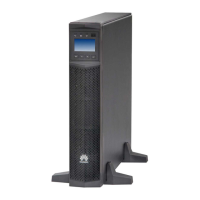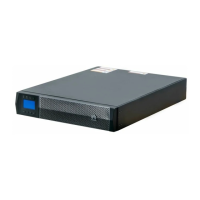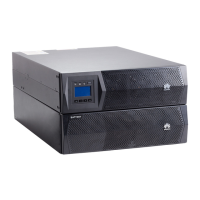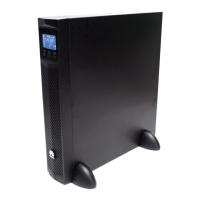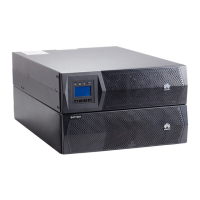1.2.1 UPS Safety
General Requirements
The category 2 (C2) UPS may cause radio interference when used in a residential
environment. Additional measures may be needed to prevent the interference.
● The UPS is used for commercial and industrial purposes only. It cannot be
used as a power supply for life support devices.
● For power supply systems that are critical to signicant economic interests or
public order, such as the national computing center, emergency command
center, railway signal system and control center, civil aviation and air
trac
control center, airport command center, nancial clearing center, and
transaction center, the Tier 4 or 3 power architecture specied in TIA-942
must be used. That is, two power supplies must be used to supply power to
loads.
● The UPS operating environment must meet the requirements for the climate
indicator, mechanically active substance indicator, and chemically active
substance indicator in ETSI EN 300 019-1 class 3.6.
● The UPS must not be located in
non-conned environments near the ocean
(0–3.7 km) or indoor or semi-indoor environments where the temperature
and humidity are not controllable, such as simple equipment rooms, civil
houses, garages, corridors, and direct ventilation cabinets near the ocean; or
houses with only roofs, railway station platforms, gymnasiums, and
aquariums.
● The UPS should be powered on as soon as possible after it is unpacked.
● The UPS can be used to serve resistive-capacitive loads, resistive loads, and
micro-inductive loads. It is recommended that the UPS not be used for pure
capacitive loads, pure inductive loads, or half-wave
rectication loads. The
UPS does not apply to regeneration loads.
● The UPS can be
congured with a backfeed protection dry contact to work
with an external automatic circuit breaker, preventing the voltage from
owing back to input terminals over static bypass circuits. If the installation
and maintenance personnel do not need backfeed protection, attach labels on
external mains and bypass input switches, informing that the UPS is
connected to a backfeed protection card. Disconnect the backfeed protection
card from the UPS before operating the UPS.
● The upstream power distribution of the UPS should meet the requirements of
protection against electric shock
specied in IEC 60364-4-41.
● A circuit breaker equipped with a residual current device (RCD) is not
recommended.
● If the root mean square (RMS) of a phase voltage of the utility power exceeds
320 V AC, the UPS may be damaged.
● To ensure power supply to loads during UPS upgrade, set the output to
maintenance bypass mode. To avoid power failure or load damage, ensure
that the bypass input is within the
specied power supply range.
UPS2000-G-(6 kVA-20 kVA)
User Manual 1 Safety Information
Issue 21 (2022-10-13) Copyright © Huawei Technologies Co., Ltd. 4
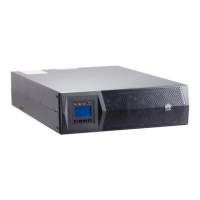
